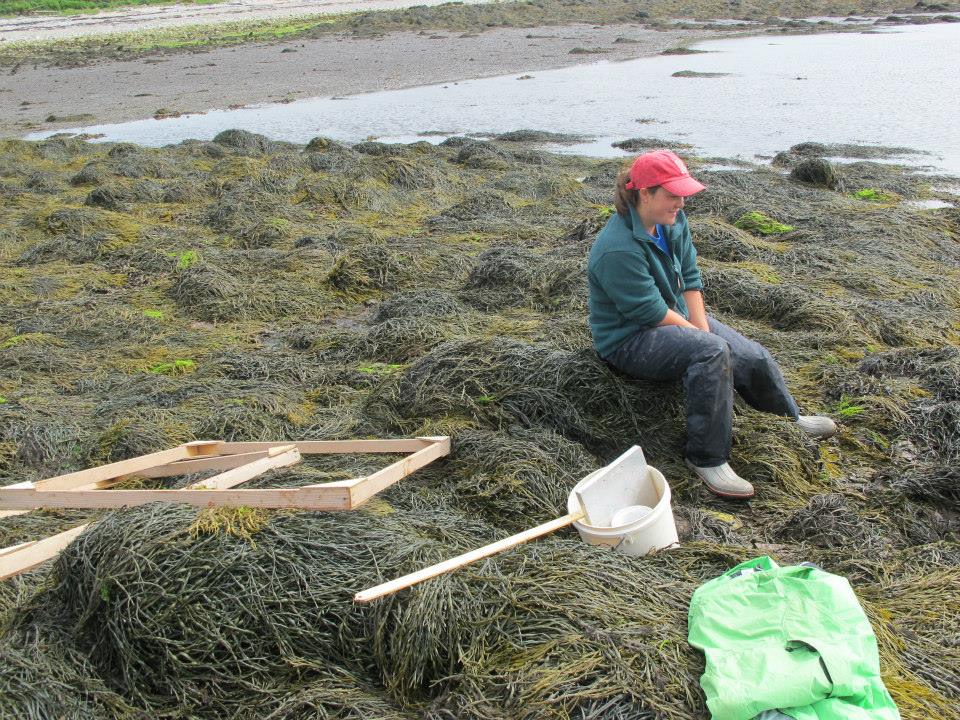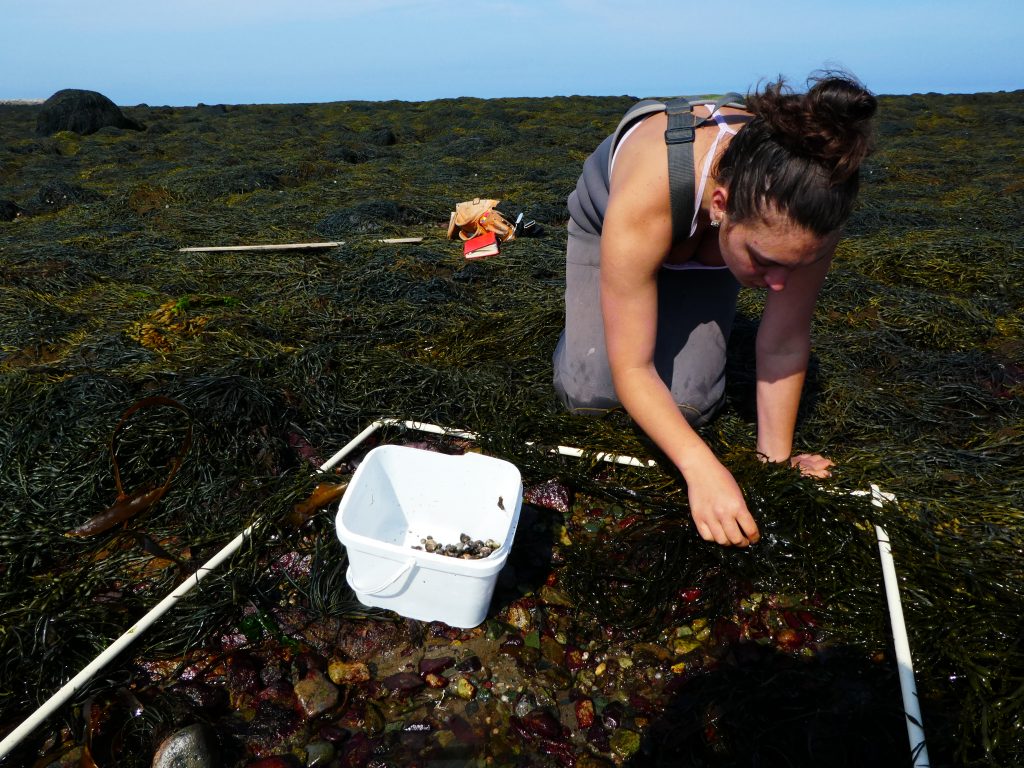Contributed by Dr. Patricia Jones, Assistant Professor of Biology and Director of the Bowdoin College Scientific Station on Kent Island
The Bay of Fundy is characterized by dramatic 50 foot tides and extraordinary rocky intertidal diversity. One of the most prevalent and defining species in the Fundy intertidal, as well through the Gulf of Maine, is the algae called rockweed or knotted wrack, Ascophyllum nodosum. Rockweed creates a habitat that contains multiple species of snails, crabs, mussels, amphipods and more. In the last decade, harvesting of rockweed has dramatically increased in the northeast as it is used for fertilizer, food-additives, and nutritional supplements. Rockweed harvesting has provided important jobs and stability for many communities across Maine and New Brunswick. The impacts of rockweed harvesting on intertidal communities, however, remain very little studied.

In 2013, when rockweed harvesting was becoming an increasingly contentious issue in the North Atlantic, a Bowdoin student named Christine Walder began a large research project. Christine created 40 2 x 2m research plots at the Schiller Coastal Studies Center on Orr’s Island Maine, and 30 plots at the Bowdoin Scientific Station on Kent Island. In 2014 she returned to Kent Island and established 18 more plots. All of the plots were arranged in pairs in which one plot was unaltered (the control), and in the nearby plot Christine cut the rockweed to the harvest regulation height of 41 cm. Within each plot Christine recorded the area covered by different species of algae, and counted the numbers of marine invertebrates. Christine found that on Orr’s Island rockweed grew 2-5 cm per year, whereas on Kent Island it grew 17-28 cm per year. In the harvested plots on Kent Island there was a higher density of other green algae species both the summer of harvest and the following summer, and in the second summer the density of Fucus sp. (another brown algae like rockweed) tripled. Total invertebrate abundance was reduced by as much as 50% in harvested plots, and harvested plots had a slight decrease in invertebrate species richness. After one year, harvested plots also had fewer of the invasive European green crab, Carcinus maenus, and fewer amphipod and isopod crustaceans. Harvested plots did, however, increase in abundance of the common periwinkle Littorina littorea, in contrast harvesting reduced abundance of another common intertidal snail, Littorina obtusata. Overall, Christine did not observe complete recovery of harvested plots to pre-harvest algal or invertebrate communities over the course of one year.

In order to assess the long-term impacts of rockweed harvesting, this summer another Bowdoin student, Katie Galletta, is re-censusing Christine’s 18 plots from 2014. Sadly the 2013 plots were not marked permanently enough for us to relocate them. But in 2014 Christine used a different method and with the help of GPS Katie has been able to relocate all 18 plots (9 harvested and 9 controls). Katie is exactly replicating Christine’s methods to assess the impacts of rockweed harvesting 4 years later. Katie’s data collection on Fucus algae and invertebrates in still underway, but she has already found that the rockweed in the harvested plots is 10-40 cm shorter than that in the control plots. We are looking forward to more data rolling in over the next few weeks!